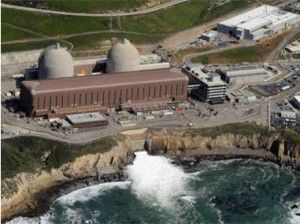Steamships, locomotives, electricity; these marvels of the industrial age sparked the imagination of futurists such as Jules Verne. Perhaps no other writer or work inspired so many to reach the stars as did this Frenchman’s famous tale of space travel. Later developments in microbiology, chemistry, and astronomy would inspire H.G. Wells and the notable science fiction authors of the early 20th century.
The submarine, aircraft, the spaceship, time travel, nuclear weapons, and even stealth technology were all predicted in some form by science fiction writers many decades before they were realized. The writers were not simply making up such wonders from fanciful thought or childrens ryhmes. As science advanced in the mid 19th and early 20th century, the probable future developments this new knowledge would bring about were in some cases quite obvious. Though powered flight seems a recent miracle, it was long expected as hydrogen balloons and parachutes had been around for over a century and steam propulsion went through a long gestation before ships and trains were driven by the new engines. Solid rockets were ancient and even multiple stages to increase altitude had been in use by fireworks makers for a very long time before the space age.
Some predictions were seen to come about in ways far removed yet still connected to their fictional counterparts. The U.S. Navy flagged steam driven Nautilus swam the ocean blue under nuclear power not long before rockets took men to the moon. While Verne predicted an electric submarine, his notional Florida space gun never did take three men into space. However there was a Canadian weapons designer named Gerald Bull who met his end while trying to build such a gun for Saddam Hussien. The insane Invisible Man of Wells took the form of invisible aircraft playing a less than human role in the insane game of mutually assured destruction. And a true time machine was found easily enough in the mathematics of Einstein. Simply going fast enough through space will take a human being millions of years into the future. However, traveling back in time is still as much an impossibillity as the anti-gravity Cavorite from the First Men in the Moon. Wells missed on occasion but was not far off with his story of alien invaders defeated by germs- except we are the aliens invading the natural world’s ecosystem with our genetically modified creations and could very well soon meet our end as a result.
While Verne’s Captain Nemo made war on the death merchants of his world with a submarine ram, our own more modern anti-war device was found in the hydrogen bomb. So destructive an agent that no new world war has been possible since nuclear weapons were stockpiled in the second half of the last century. Neither Verne or Wells imagined the destructive power of a single missile submarine able to incinerate all the major cities of earth. The dozens of such superdreadnoughts even now cruising in the icy darkness of the deep ocean proves that truth is more often stranger than fiction. It may seem the golden age of predictive fiction has passed as exceptions to the laws of physics prove impossible despite advertisments to the contrary. Science fiction has given way to science fantasy and the suspension of disbelief possible in the last century has turned to disappointment and the distractions of whimsical technological fairy tales. “Beam me up” was simply a way to cut production costs for special effects and warp drive the only trick that would make a one hour episode work. Unobtainium and wishalloy, handwavium and technobabble- it has watered down what our future could be into childish wish fulfillment and escapism.
Continue reading “Verne, Wells, and the Obvious Future Part 1” »









